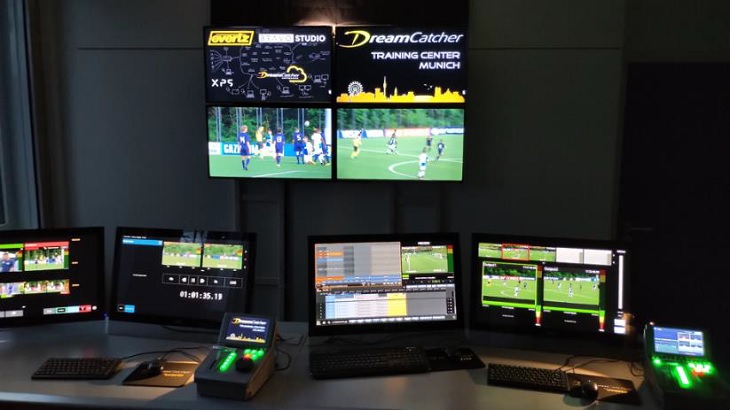
Also opens DreamCatcher training centre in Munich
BURLINGTON, Ont. — Canadian media tech maker Evertz Technologies last week announced Russian broadcaster Channel One has installed an Evertz Mediator playout and content distribution system at its Ostankino Technical Centre in Moscow as part of the broadcaster’s transition from HD-SDI technology to full IP.
Over the last four years, the Ostankino facility has been transferring its technical infrastructure to IP, using Evertz SDVN (software defined video networking) technology and equipment, including two Evertz EXE routers (main and backup) with Magnum SDVN and client-host servers, as well as an Evertz EQX router with Magnum for ingest.
“Continuing to adopt this more modern approach to video/audio stream routing and transmission was just one reason why Channel One decided to upgrade its playout facilities,” explains Evertz’s press release.
“Other factors included doubling the number of channels broadcast from six to 12, a desire to transition to ‘channel-in-a-box’ technology for on-air programs and a need to improve compatibility with the output format requirements of satellite and cable providers. Channel One also wanted to improve its playout system integration with its business applications and make maximum use of complex graphical capabilities,” the press release reads.
The Evertz Mediator system installed at Ostankino includes the following components: 29 Overture (ORT) Live integrated playout engines; 14 ORT Media Client record servers; two Render-X proxy generator servers; an advanced multi-node virtualization environment hosting Mediator core and computer nodes; 15 VUE CUBE workstations; and two Isilon storage clusters (main and backup), each with nine nodes, says the release.
The system is now being used by Channel One to broadcast 12 channels of news, sports and entertainment to more than 250 million viewers worldwide.
“We are now the first broadcaster in Russia to embrace SMPTE ST2110 (IP) and we have modernized our channel distribution and playout by installing a more software-driven, adaptable workflow,” said Igor Yadykin, deputy chief of the technical department at Channel One, in the release.
“The new playout system was created for our Channel One time zone channels, of which there are 12 — each generating SD and HD signals at the same time,” added Yadykin.
“Previously, some of the time zones were doubling up but when we changed the system, we added five more hourly zones so that each zone had its own playout. We now have full redundancy, with separate racks and equipment for each channel, plus two spares.”
In other news last week, Evertz announced it has opened a new DreamCatcher Training Center (DCTC) in Munich, Germany, where broadcasters and content providers can get familiar with the company’s live production platform.
Located in Munich’s SpaceNet Building, the DCTC (pictured) has connectivity to perform full remote production workflow-based demonstrations of Evertz’s XPS real-time UHD/3G/HD streaming platform and BRAVO Studio platforms, says the company’s press release.
“We understand that moving to a new live production platform not only requires technical excellence, but is also based on operators who know the platform inside and out and feel confident to operate it in a very fast and efficient way,” said Sebastian Ruchti, sales engineer for Germany and Austria for Evertz, in the release.
“Therefore, we decided to set up a DreamCatcher ecosystem here in Munich that can host multiple operators, that not only allows operators to come in and familiarize with the system locally, but also allow customers to discover our award-winning BRAVO Studio workflow remotely from anywhere.”
For more on these two announcements from Evertz, please click here.
Photo courtesy of Evertz Technologies.



